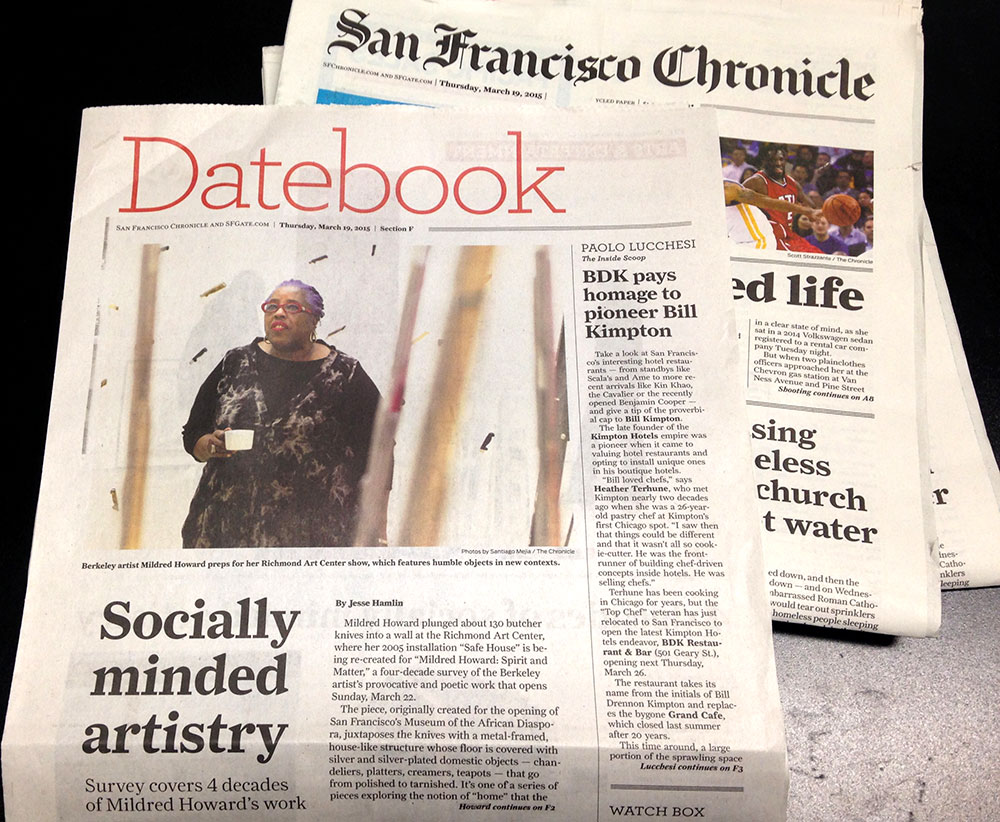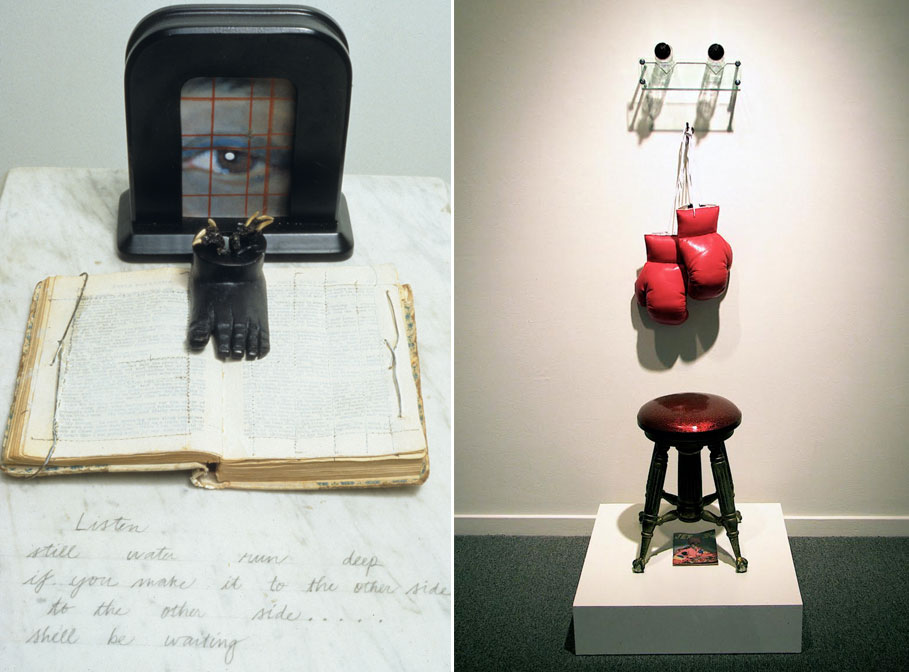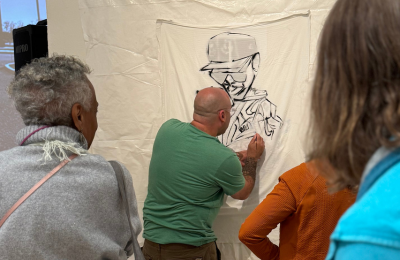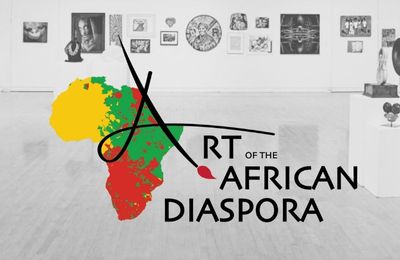San Francisco Chronicle: Why Mildred Howard Wields 130 Butcher Knives for Art

The SF Chronicle featured our exhibition Mildred Howard: Spirit and Matter on the cover of the Datebook. Writer Jesse Hamlin stopped by the Richmond Art Center to preview this four-decade survey and to speak with Berkeley artist Mildred Howard.
We hope you will join us for one of the many public programs associated with this exhibition. This solo exhibition runs through May 24.
Why Mildred Howard wields 130 butcher knives for art
San Francisco Chronicle, March 18, 2015
by Jesse Hamlin
Mildred Howard plunged about 130 butcher knives into a wall at the Richmond Art Center, where her 2005 installation “Safe House” is being re-created for “Mildred Howard: Spirit and Matter,” a four-decade survey of the Berkeley artist’s provocative and poetic work that opens Sunday, March 22.
The piece, originally created for the opening of San Francisco’s Museum of the African Diaspora, juxtaposes the knives with a metal-framed, house-like structure whose floor is covered with silver and silver-plated domestic objects — chandeliers, platters, creamers, teapots — that go from polished to tarnished. It’s one of a series of pieces exploring the notion of “home” that the prolific assemblage and installation artist has made over the past 20 years, in addition to creating wry smaller-scale sculptures, graphic work and big civic projects such as “Three Shades of Blue” — a series of blue glass panels on the Fillmore Street bridge over Geary Boulevard, etched with a jazz-themed poem by Quincy Troupe — and the “Salty Peanuts” sculpture at San Francisco International Airport, composed of 130 saxophones.
“Home is not always a safe place,” says Howard, 69, a sharp and funny woman who’s wearing red-framed glasses and a royal blue highlight in her hair. “This deals with women who’ve been battered, children and whoever else thinks they’re living in a safe place but in fact are not.” The forest of knives protruding from the wall is creepy, she agrees, but physical abuse “is worse than creepy.”
Howard, a socially minded collagist who specializes in putting humble objects together in new contexts that give them unexpected resonance, picked up the silver pieces at the antique shops, junk stores and flea markets she often scours for material, as well as on eBay.
“I was looking for things that people consider precious — but are really just things. I was thinking about how we value objects and people.”
Howard, the youngest of 10 kids whose parents migrated here from Texas during World War II and the only one born in San Francisco, hadn’t yet installed another potent piece that will occupy two other walls: a grid made of 4,000 bullet shells. She was thinking of the shooting of black South African students killed during the Soweto Uprising in 1976, when they protested a decree forcing them to learn in Afrikaans (which Bishop Desmond Tutu called the language of the oppressor) as well as English. She bought the shells at an East Oakland gun shop.
This piece is “relevant to what’s happening all over this country,” says Howard, referring to the shooting of African Americans by police and black-on-black crime. From a distance, the piece looks like a formal abstraction — which in part it is — “but when you walk up closer, you realize what it is.”
Some of Howard’s more playful pieces are also on view in this show, which was organized by guest curator Jan Wurm. They include “Skillet to the Frying Pan,” a riff on Marcel Duchamp’s famous “ready-made” of a bicycle wheel planted in a stool. In Howard’s version, a long-handled black skillet sprouts from the stool (black people used to call each other skillet as a derogatory term).
A glass-etched print of the sculpture is also on view, alongside other 2-D works Howard made in 2011 in the printmaking studio at the Pilchuck Glass School in Washington state, including a spare, compelling image of a plaster-white hand (cast from Howard’s) coming out of a 78-rpm Ink Spots record. She’s also showing some of the voluptuous blown-glass question marks and other punctuation sculpture she made at Pilchuck.
Some of the self-portraits Howard made at Magnolia Editions in Oakland are here, too. So are some of her early collages, made with old stockings, stamp books, photographs of family members, old Muni transfers and other ephemera, that summon a history and sense of place and deal with memory and the passage of time.
“I come out of a fashion background of making things,” Howard says. “My parents were antique dealers and shipyard workers, and they made things. I was always fascinated by putting things together and seeing what other kind of meaning they could take on by doing that. … Things have multiple meanings.”
Howard, whose latest large-scale public project is a huge bronze rococo picture frame that will be installed along a trail on a hill at Hunters Point, framing the landscape, just returned from New Orleans, where one of her pieces was installed (on permanent loan) outdoors at Xavier University. Composed of 92,000 clear bottles — the biggest glass house she ever made — it was inspired by Joseph Eichler, the visionary developer who built elegantly modern, affordable houses that let the outside in, and which he insisted be sold to people of all races at a time when the suburbs were still segregated.
“The light comes through it,” says Howard, who made the piece for the Palo Alto Cultural Center (some of the first Eichlers were built in Palo Alto). It takes on different meanings in the South, where “a glass bottle struck in the ground, neck down, is supposed to keep bad spirits away. I keep saying, ‘This is my last house’ every time I do one, but this may be it.”
This exhibition runs from March 22 – May 24, 2015.
Tags: featured





